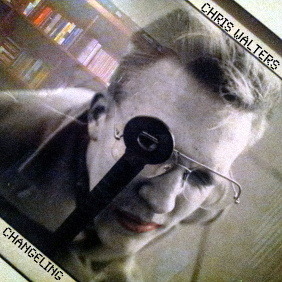Why the name “Changeling?”
I refer to this collection as “Changeling” because I recorded tracks 1-19 from 1987 to 1991, years of painful turmoil and identity crisis. During those five years I felt like a changeling, which in many legends is an inhuman creature secretly exchanged for a human, often a child. And then suddenly and dramatically in June 1991, God changed my identity back to “child of God.” I came back to the church in which I grew up, joined an intergenerational “Disciple” Bible study class, quickly made friends with healthy adult Christians, participated in a small group for many years, and proceeded to study the Bible, theology, philosophy, and science for the intervening decades. This quest ultimately led me to answer God’s call from childhood to ordained ministry, passing through 14 years as an information technology professional, marriage, adoption, two seminary degrees, and through to elder ordination in The United Methodist Church.
This wild collection and journey of music appropriately concludes with “Eun-Hye’s Song” (for my wife), featuring a conventional 1-5-4 chord progression, and singer-songwriter Laura Kleinschmidt’s “Come to Me,” a beautiful story of Jesus calling the song’s protagonist out of an existential abyss back to Him, back to God.
Curious about my musical influences? You should start with British guitarist extraordinaire Bill Nelson. Also: minimalist composer Philip Glass, percussionist David Van Tieghem, the solo careers of everyone in the bands “Japan” (especially the late Mick Karn), “Yellow Magic Orchestra,” and Brian Eno and his ilk, especially trumpeter Jon Hassell.
The cover is a photo of a framed photo taken of me at age 19.
The technology and process behind “Changeling”
The original recordings were created with various keyboards, drum machines, and tone modules from the analog and budding digital age of 1980s synthesizers and home recording. For most of the recordings my studio consisted of:
- Sequential Circuits Multitrak keyboard
- Ensoniq Mirage keyboard
- Korg DDD-1 drum machine
- Korg EX-8000 tone module
- Yamaha TX81Z tone module
- Roland MC-500 sequencer
By today’s digital standards my recording process was tedious and crude, but it was a labor of love laying down multiple tracks on a Tascam Porta Two (four track recorder / six channel mixer using standard 1/8-inch cassette tape), synchronizing the boards and modules again to the tape’s fourth track, and then mastering the whole menagerie of sound to a cassette deck. Tracks 1-19 were recorded using this process and that for far-too-long sat around on cassette tapes, and thus the audio quality of these songs, while acceptable, is not high. Tracks 20 & 21 were digitally recorded straight to the computer using a Roland RS-9 keyboard for instrumentation.
I am a self-taught musical tinkerer with minimal performance skill, and thus my music expresses more impressionism than conventional song writing. Herein you will find music with wild pastiches of improvisation, layers of minimalist structure, some conventional chord changes, and an out-of-tune oscillator or two (or three!).
Enjoy!
Wishing you change and transformation,
Chris
1. “North Carolina” (1987)
2. “Jones a Boppin'” (1987)
3. “Redbook” (1987)
4. “Shake and Stake” (1987)
5. “Late Night Jazz” (1988)
6. “Chariots of Sequence” (1988)
7. “Playing the Violin with Scissors” (1988)
8. “Saxy” (1989)
9. “Jammin'” (1989)
10. “The Gospel According to Nelson” (1989)
11. “Ripe Journey” (1989)
12. “Don’t Chord Us We’ll Chord You” (1990)
13. “Steve Martin’s Happy Feet” (1990)
14. “Whammy, Whiny, Little Ditty” (1990)
15. “Synth Class Project” (1990)
16. “Where’s the Guitar?” (1990)
17. “Whatever, Dude” (1990) with drummer Gary Berndt on hi-hats and roto toms
18. “Early Ministry” (1991)
19. “I Dream of Sleep” (1991)
20. “Eun-Hye’s Song” (2005)
21. “Come to Me” (2005) (written & sung by Laura Kleinschmidt; arranged & performed by Chris)

